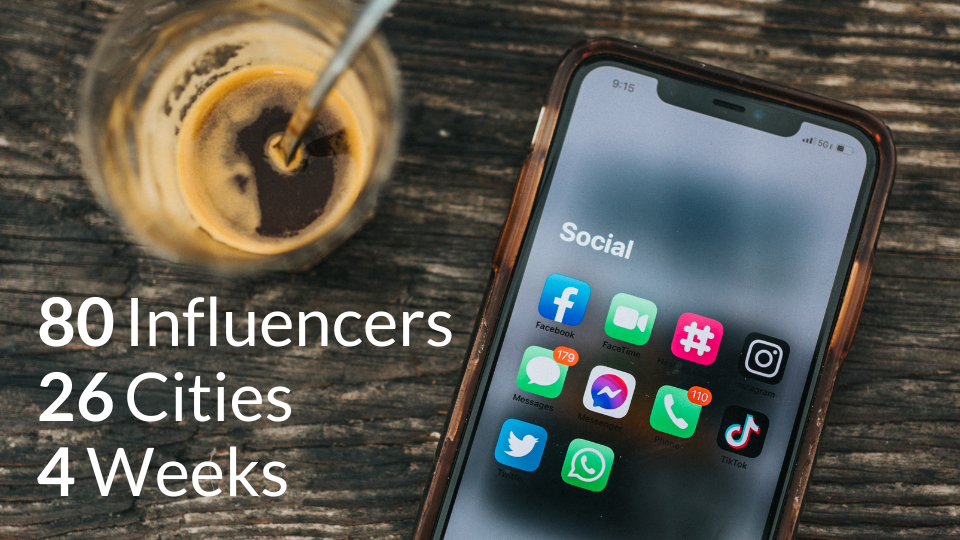2023 is throwing unique challenges.
Content demands are growing. Reaching and resonating with audiences takes more time and intention than ever before. Consumers are discerning and selective of the brands they support. They expect companies to be relatable, genuine, and attuned to cultural moments.
Simultaneously, marketing budgets are shrinking with a looming recession. Sinking all of your budgets into celebrity partnerships, polished ads, and big media buys isn’t feasible or as effective.
Translation: you must do more with less. You have to get scrappy – and rethink how you stay relevant to reach your audience.
In practice, that means executing timely and trendy campaigns. In the social space, something that’s “trendy” has a 2-4 week lifespan.
This nimble but needed approach to marketing can be challenging for large enterprises with bureaucratic processes. In this blog, we’ll explore strategies to overcome these obstacles and effectively engage with your audiences.

Spoiler: global brands are staying nimble through micro-influencer campaigns and turnkey processes. This empowers them to ignite creativity quickly and strategically with the right systems and partners in place.
You could say the proof is in the falafel. Let’s use one quick-turn partnership with The Halal Guys for example. We executed a limited-time menu item campaign with 80 influencers across 26 cities in just four weeks. Here’s how:
Step 1: Increase engagement + lean into micro-influencers
Influencers have the power to sway their followers’ opinions and purchasing decisions without much research from the consumer. They’re valuable partners and extensions of in-house teams – when done right.
Traditionally, influencer marketing meant partnering with celebrities with big platforms. Celebrities have a time and place in strategies, but they’re not always the answer.
Micro-influencers often drive better engagement. They’re trusted creators who’ve built a tight-knit community of like-minded followers. Dive deeper into the value of micro-influencers in our influencer relations blog.
Plus, if you’ve worked with a celebrity or mega influencer before, you know just how long the contract and creative process takes. Months of negotiating and waiting and you’ve already bypassed key cultural moments.
Micro-influencers, on the other hand, can activate more quickly and capitalize on social trends. With The Halal Guys, we partnered with 80 influencers and secured hundreds of content pieces – for a fraction of what a celebrity partnership would have cost.

Step 2: Create organized processes
To effectively leverage micro-influencers and jump on trends, you need brand standards and turnkey processes in place. This means creating a library of brand templates, like creative briefs and contracts, that are ready for customization at any time. You can add relevant and timely details to existing documents along the way, but templates ensure you have a solid head start.
Be proactive in collaborating with legal and determine deal breakers in contracts and in content. For example, are there specific phrases influencers can’t say? Does the brand need ownership of the content or is licensing enough?
You also want to set internal expectations with your agency teams for quick content reviews and approvals.

Step 3: Identify right fit creators
Finding the right creator for your activation will set you up for success. You’ll want to work with creators who align with your brand values and relate to your target audience.
When we vet influencers, we consider over 20 different pieces of criteria, such as engagement rate, location, personality + values, brand alignment, content quality + authenticity, and of course, diversity and inclusion. It is critical that campaigns represent the communities your business serves, not just those in your own feed.

Step 4: Create trending content on priority channels
If you’ve vetted and found the right partners, let them do their work. Content is more genuine and ultimately performs better when it doesn’t feel like a scripted ad.
Consider influencers as partners – and strategists. They know their audience and platforms better than anyone else. Let their insights guide the content. You’ll get more creative, on-trend posts from it.
Keep your audience engaged by diversifying and experimenting with different types of content and channels. The key is finding what works for your brand and target audience. For example, The Halal Guys experimented with TikTok and YouTube videos, even though their audience historically lived on Instagram.

Step 5: Track the metrics that matter most
Finally, identify the metrics that matter most to your brand and tie success back to your business goals. For The Halal Guys campaign, the primary metrics they were tracking were engagement and reach. They achieved their desired results and drove sales they could attribute to the success of the influencer campaign.

You can organize a quick-turn micro-influencer campaign that produces desired results. Learning how to activate influencer campaigns is crucial to your enterprise brand’s ability to capitalize on trends. By creating organized processes, finding the right creator, diversifying and experimenting with types of content, and identifying the metrics that matter most, you can maximize resources and fuel your micro-influencer relations strategy to reach your campaign activation goals.




